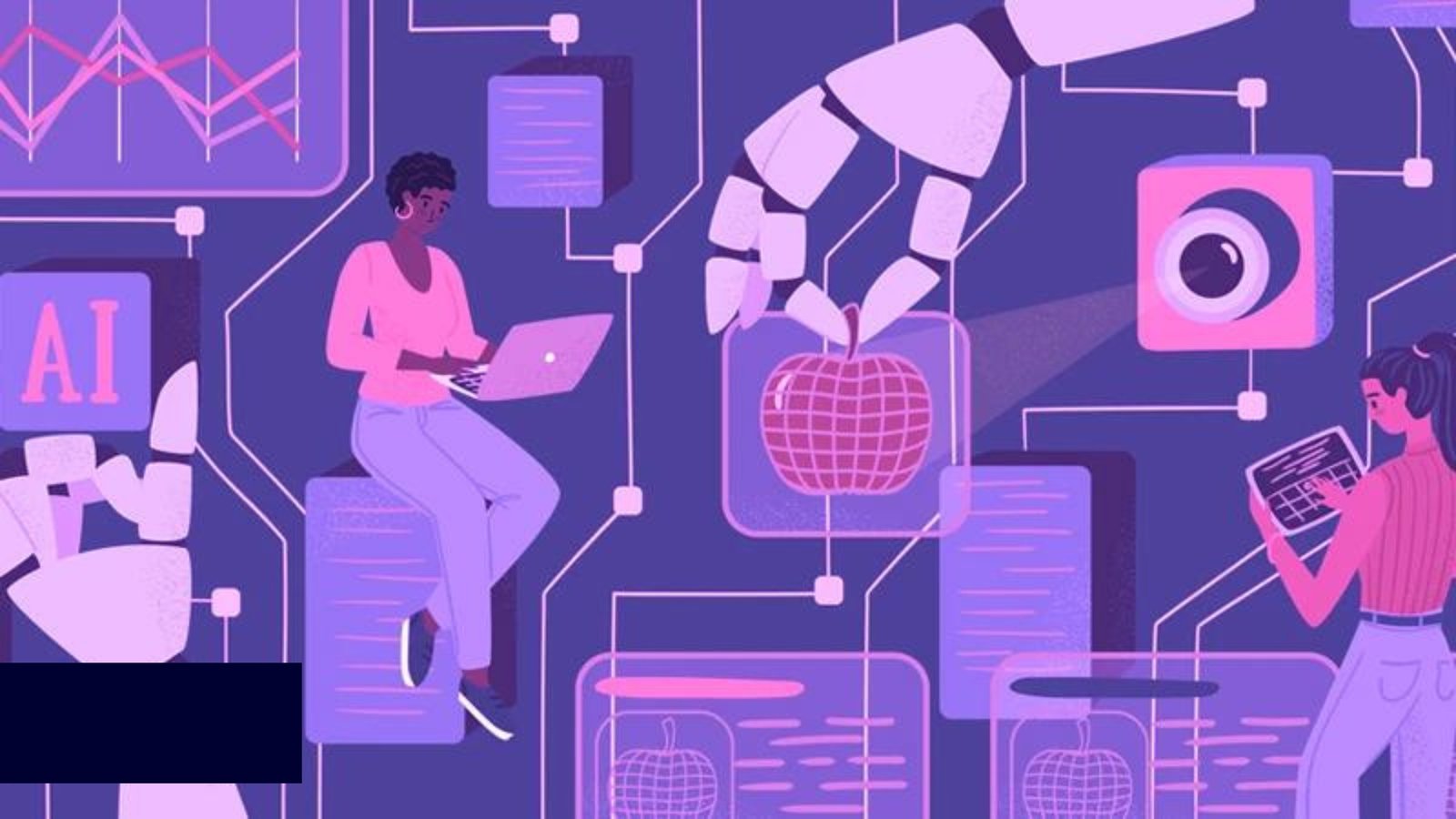
Artificial intelligence is among the many factors propelling the evolution of cross-platform apps and services. The potential for digital transformation of artificial intelligence has been used by billions of people across several industries, including education, business, and healthcare.
So, top AI businesses need to figure out how to make sure the positive effects of AI are more than the negative ones. Businesses and customers alike can benefit from AI experiences that are helpful, trustworthy, and safe if this is accomplished. An essential aspect of responsible AI is considering the possible benefits and drawbacks to society as a whole as a result of AI’s growth and scalability. What follows is a primer on ethical AI and how you may implement it.
Definition of Responsible Artificial Intelligence
When creating AI applications, the Responsible AI Guide offers a fresh perspective by first considering the law and ethics. The appropriate use of artificial intelligence can achieve transparency and reduce concerns like AI bias. Businesses can benefit from standardized methods for AI best practice governance by ensuring AI code is human-centric, interpretable, and easy to explain. Responsibly designed AI systems can guarantee transparency, fairness, and dependability.
The developers and data scientists who work on a company’s AI models are responsible for establishing trustworthy AI standards. Most ethical AI cases demonstrate that different companies take measures to guarantee that AI systems are transparent and do not discriminate.
Plus, different businesses may use other methods when putting plans into action. For example, other firms may have separate teams to develop, implement, and monitor their responsible AI framework. Organizations should record their responsible AI implementation and accountability efforts according to best practices for responsible AI deployment.
Importance of Responsible Artificial Intelligence
The significance of responsible AI is the next central point to emphasize in learning AI guidelines. Improving AI governance through responsible AI is an ongoing effort. Under this broad concept, we find discussions on AI ethics and democratization. You should be aware that AI systems can be influenced by bias in the data used to train machine learning models.
It can be because the people who trained the model have their biases, or because the data they used is inaccurate or missing essential details. The human race is vulnerable to the harmful effects of biased AI systems. In healthcare, for instance, AI models can misdiagnose patients. The same applies to the banking industry, where AI algorithms can arbitrarily deny customers’ loan requests.
The need to broaden the scope of responsible AI is growing with the prevalence of solutions incorporating AI capabilities. By following a responsible AI approach, companies may make AI systems more trustworthy and transparent while reducing AI bias. The way AI is revolutionizing several industries and tackling significant real-world problems highlights the need for responsible AI. Finding universally applicable AI systems is crucial.
Responsible AI promotes a responsible innovation culture by giving decision-makers and AI developers the tools to adhere to ethical considerations. They can use it to develop creative solutions that maximize AI’s potential for you. As a value proposition, ethical AI can help organizations gain customers’ faith in AI, which is crucial.
Lack of trust is the main obstacle to using AI systems in commercial applications. Customers will have more faith in companies that employ AI if those products adhere to ethical AI guidelines. The most notable benefit of employing responsible AI is the promise of safer and more accountable goods.
Most Noticeable Principles of Responsible AI
Machine learning and artificial intelligence models may need to adhere to distinct principles that change from company to company. Still, you have reasonable reasons to be skeptical about ethical AI principles and how to choose the right ones for your company. For instance, Microsoft and Google have their unique guidelines for ethical AI.
Also, Microsoft and Google’s AI concepts are heavily incorporated into the AI Risk Management Framework published by the National Institute of Standards and Technology (NIST). A synopsis follows Google’s primary recommendations for ethical AI research and development.
Social Utility
Among the concepts of a responsible AI guide, the social benefit of AI is the major highlight. Several sectors, including medicine, production, power, the arts, transportation, and safety, stand to benefit significantly from AI development. Examining the social and economic aspects of these technologies’ use cases is critical to determine if the possible advantages of AI technologies exceed the disadvantages and hazards.
Artificial intelligence can also enhance the capacity to comprehend the significance of material. Developers must guarantee that users receive accurate and high-quality information to comply with the social, legal, and cultural standards of each country where they must implement AI systems.
Bias Mitigation
Addressing prejudice is another essential principle for ethical AI. AI algorithms and training data can reinforce, reflect, or reduce unfair prejudices. Fair and unjust prejudices can vary significantly among cultures and countries, making it difficult to distinguish between them.
It is crucial to ensure that AI does not unfairly affect individuals, especially those with sensitive traits. AI systems should treat all people with dignity and respect, regardless of gender, race, country, ethnicity, sexual orientation, political leanings, religious convictions, or socioeconomic status.
Safety
Safety is one of the guiding criteria for creating ethical AI systems. Developers should adhere to strict security and safety standards to mitigate worries about unexpected consequences that could put consumers at greater risk of damage. As most examples of responsible AI demonstrate, developers should exercise caution while building AI systems and follow best practices for AI security. And that’s not all: developers need to make sure AI technologies are secure in limited settings and that their operation is monitored after deployment.
Accountability
The notion of accountability must also guide the development of AI systems. Developers can build AI systems focusing on ethical AI by including appropriate channels for user input and appeal. Additionally, the AI system needs to explain its work in great detail. Accountable AI systems also need to be guided and controlled by humans.
Privacy
Any discussion of responsible AI must consider the consequences of privacy. Responsible AI is among the most prominent concepts, guiding the creation and application of AI across several industries. Creators of AI systems should make it possible to inform users of the data collection process and seek their approval before collecting any personal information. Furthermore, AI systems must incorporate privacy protections into their design and provide extensive management of data utilization.
Scientific Excellence
One of Google’s guiding principles for responsible AI development is maintaining high scientific excellence standards. Collaboration, open inquiry, honesty, and intellectual rigor are the only ways to advance AI technology.
Artificial intelligence (AI) techniques have also demonstrated promise in chemistry, biology, medicine, and the environmental sciences, among other well-known scientific domains. So, to live up to people’s expectations, AI systems must dedicate themselves to the most rigorous scientific standards.
Availability
“Availability” is another principle that stands out for ethical AI. Realizing AI’s versatility is an essential first step for anyone learning about responsible AI. We must ensure that AI is not misused or negatively impacted. Before committing to an AI system, it’s wise to research its nature, special features, and principal goal and utility. Beyond that, you must consider how big the technology is and how it will affect people.
Understand What Responsible AI Does Not Mean
Responsible AI encompasses more than just following the rules and regulations of a particular sector. It should also avoid things it was never supposed to do, which is another crucial consideration. Technology has the potential to cause damage in some situations. On the other hand, if AI systems are designed responsibly, their advantages will exceed their risks.
No technology that has the potential to harm humans should ever use AI, including weaponry. Employing AI in technologies that violate generally recognized standards to gather or utilize data for monitoring is unacceptable. Artificial intelligence should never be used for purposes that could run counter to the generally recognized norms of international human rights and legislation.
Best Practices for Designing and Implementing Responsible AI
Businesses might peruse extensive lists of principles from many sources to find the best way to build ethical AI. Still, outlining ethical AI design and implementation best practices would be another primary focus of such a book. Development standards should be in line with responsible AI design at the ground level for responsible AI design to be effective. Organizations may have different guiding concepts, and it’s crucial to consider that. Building AI with resources that follow a regular development process is vital. There are a few key components that the development standard should prioritize.
- Verified model architectures.
- Sharing of code repositories.
- Stability standards to support active machine learning models, thereby achieving the desired functionality.
- Sanctioned variables.
- Proven bias testing methodologies help determine the validity of AI systems.
When building AI models, it’s essential to remember certain things, such as how to be trustworthy, ethical, and safe. Some of the most effective methods for introducing ethical AI are outlined here. Ensuring data is usable and explicable is a significant theme in most ethical AI cases.
Building a diverse work culture and encouraging productive conversations to combat bias are critical. Regarding documentation and decision-making, responsible AI systems should also be designed to be reverse-engineered. This will help discover where errors are coming from. Responsible AI development must also emphasize a thorough approach that gives each application’s latent features top visibility.
Additionally, businesses should use interpretable features to create data that humans can comprehend and emphasize ethical AI concepts. Eliminating generic black-box AI model development approaches is another evident best practice to guarantee the creation of responsible AI. Conversely, a white-box development methodology is required of AI systems, which must give a transparent justification for every AI system choice.
Need for Standardization of Responsible AI
One major obstacle to widespread AI use is the absence of consensus on ethical AI and how to regulate the technology. To ensure that businesses and consumers worldwide can use AI systems without disputes, it is crucial to establish common frameworks.
Conclusion
After reviewing the fundamentals of responsible AI and its importance, it becomes clear that it is necessary. Responsible AI is essential to increasing consumer confidence in AI systems. Businesses can also benefit from its ability to enhance the transparency of AI systems. Regarding responsibility, privacy, prejudice, and safety, companies have the power to build responsible AI systems. Tech behemoths like Google and Microsoft have each developed their own guidelines for ethical AI. Companies should aim for a standardized governance framework for creating ethical AI systems soon.









